Abstract
OBJECTIVE: Evaluation of the impact of the Think First head and spinal cord injury prevention program on knowledge, attitudes, and behavior of 11-15 year old students toward injury risks and preventive strategies. SETTING: Three junior high and three senior high schools in rural and urban areas of Washington state. METHODS: Questionnaire survey before intervention, two weeks and three months after intervention to assess knowledge, attitude, and self reported behavior change. Observations of students as they left school property to determine bicycle helmet and seat belt use. RESULTS: Little impact on attitudes and no consistent change in knowledge or self reported behaviors. Too few students rode bicycles to accurately assess helmet use; no consistent change in seat belt use. CONCLUSION: The Think First program appears to have little impact on changes in knowledge, self reported behavior, or observed behavior. Other strategies to decrease injuries in adolescents may be more successful.
Full text
PDF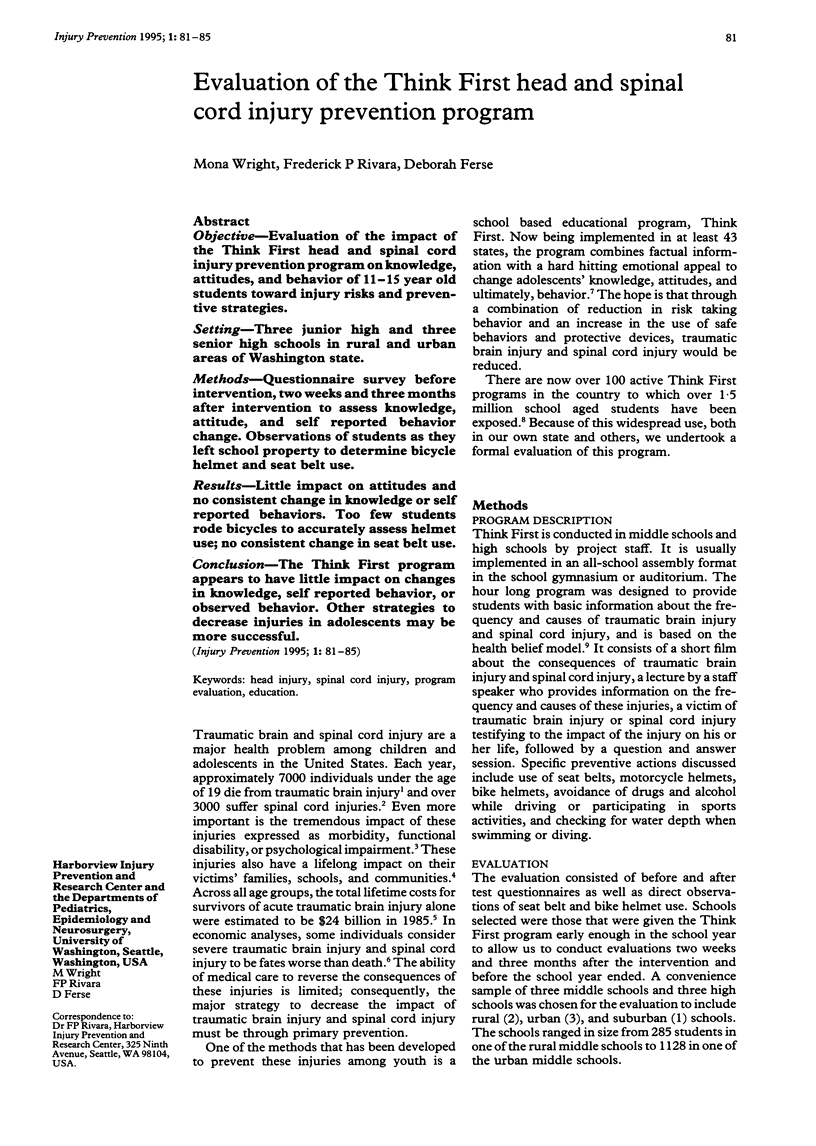
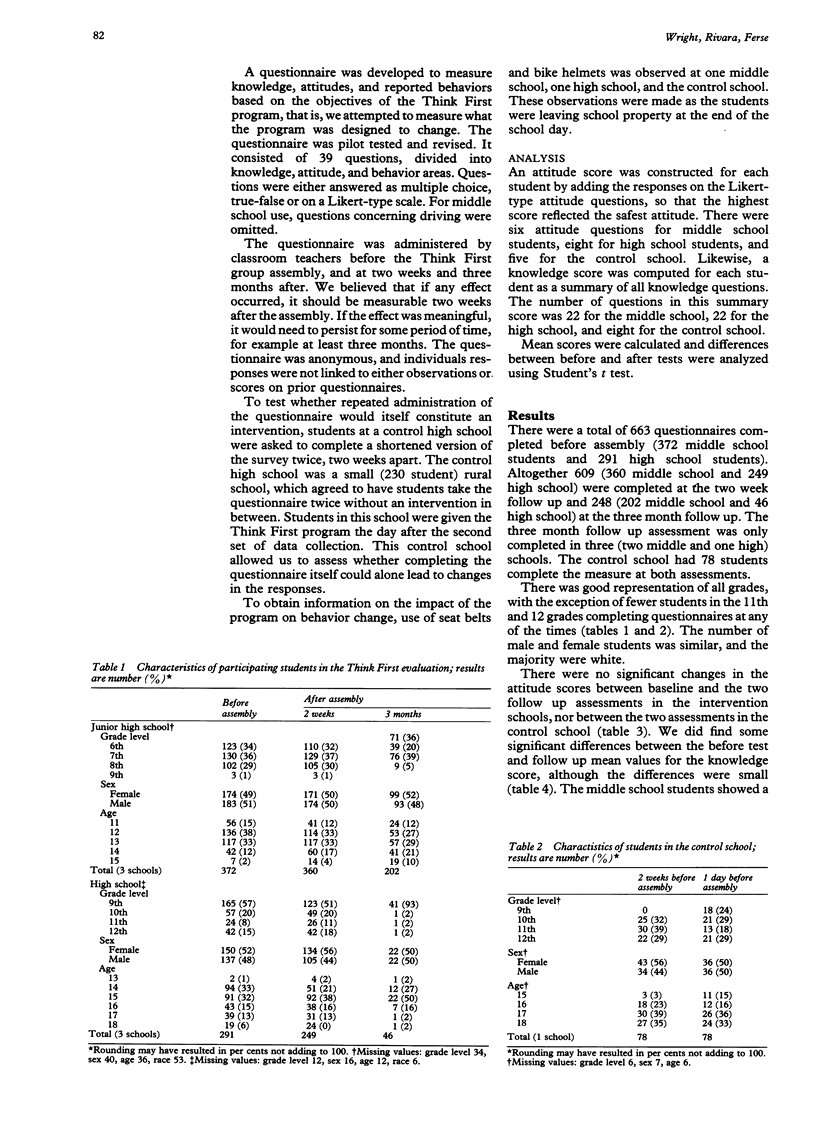
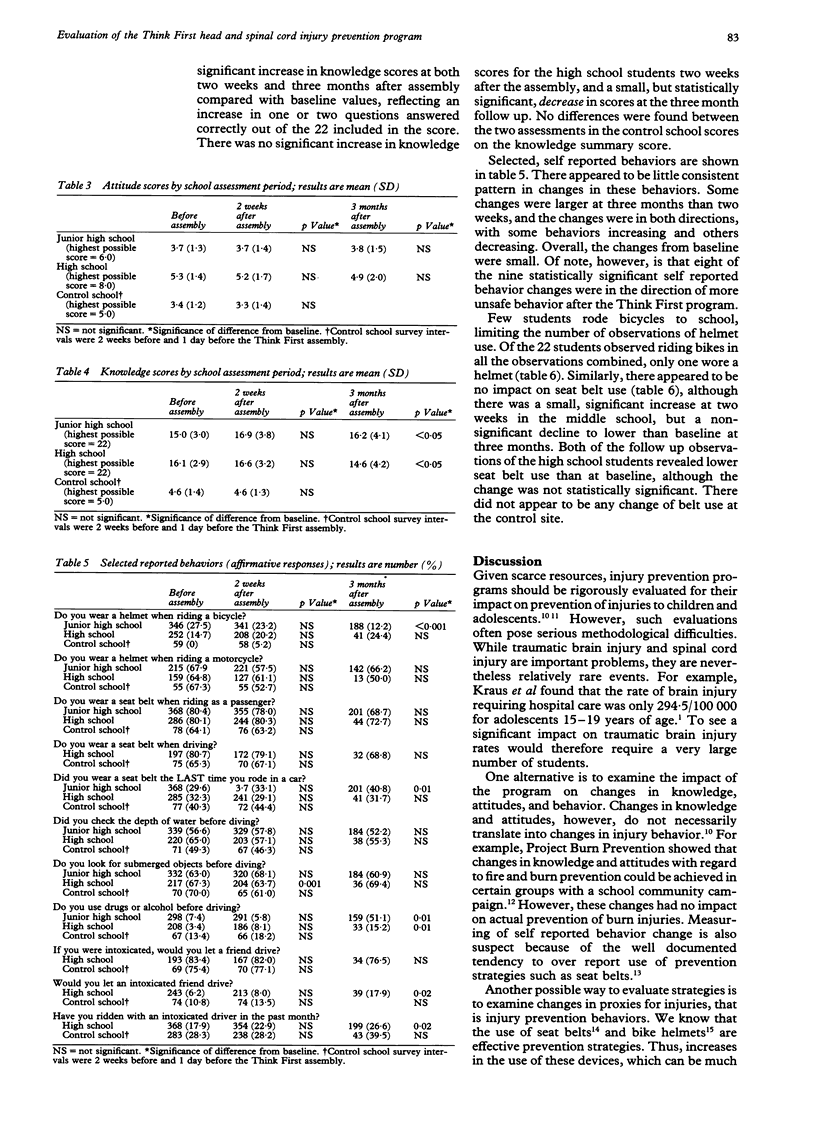
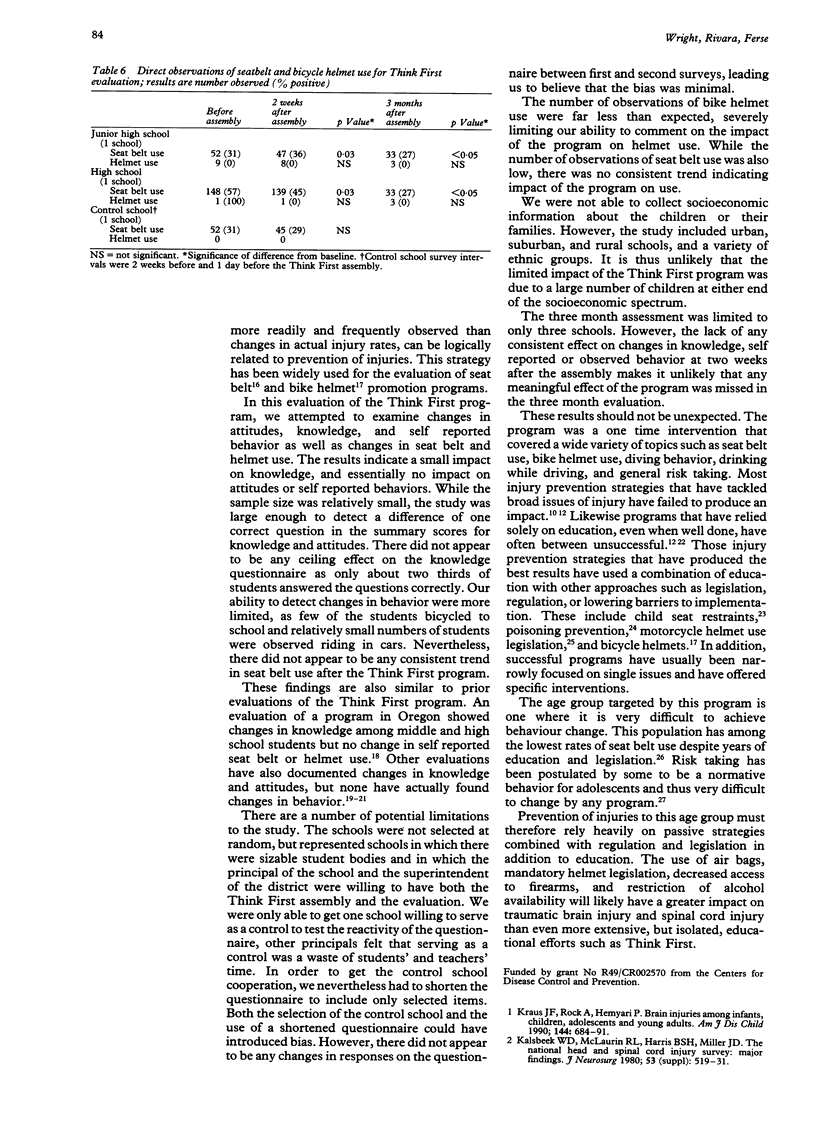
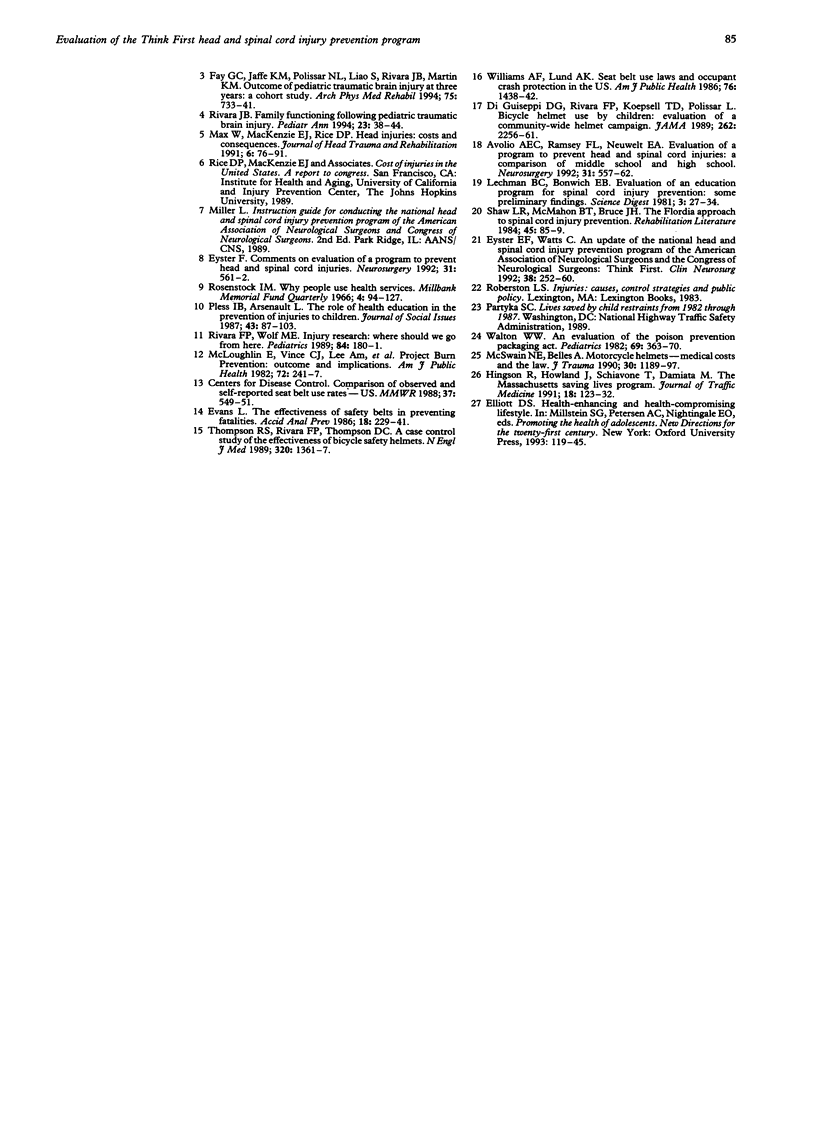
Selected References
These references are in PubMed. This may not be the complete list of references from this article.
- Avolio A. E., Ramsey F. L., Neuwelt E. A. Evaluation of a program to prevent head and spinal cord injuries: a comparison between middle school and high school. Neurosurgery. 1992 Sep;31(3):557–562. doi: 10.1227/00006123-199209000-00019. [DOI] [PubMed] [Google Scholar]
- DiGuiseppi C. G., Rivara F. P., Koepsell T. D., Polissar L. Bicycle helmet use by children. Evaluation of a community-wide helmet campaign. JAMA. 1989 Oct 27;262(16):2256–2261. [PubMed] [Google Scholar]
- Evans L. The effectiveness of safety belts in preventing fatalities. Accid Anal Prev. 1986 Jun;18(3):229–241. doi: 10.1016/0001-4575(86)90007-2. [DOI] [PubMed] [Google Scholar]
- Eyster E. F., Watts C. An update of the National Head and Spinal Cord Injury Prevention Program of the American Association of Neurological Surgeons and the Congress of Neurological Surgeons. Think first. Clin Neurosurg. 1992;38:252–260. [PubMed] [Google Scholar]
- Fay G. C., Jaffe K. M., Polissar N. L., Liao S., Rivara J. B., Martin K. M. Outcome of pediatric traumatic brain injury at three years: a cohort study. Arch Phys Med Rehabil. 1994 Jul;75(7):733–741. [PubMed] [Google Scholar]
- Kraus J. F., Rock A., Hemyari P. Brain injuries among infants, children, adolescents, and young adults. Am J Dis Child. 1990 Jun;144(6):684–691. doi: 10.1001/archpedi.1990.02150300082022. [DOI] [PubMed] [Google Scholar]
- McLoughlin E., Vince C. J., Lee A. M., Crawford J. D. Project Burn Prevention: outcome and implications. Am J Public Health. 1982 Mar;72(3):241–247. doi: 10.2105/ajph.72.3.241. [DOI] [PMC free article] [PubMed] [Google Scholar]
- McSwain N. E., Jr, Belles A. Motorcycle helmets--medical costs and the law. J Trauma. 1990 Oct;30(10):1189–1199. [PubMed] [Google Scholar]
- Rivara F. P., Wolf M. E. Injury research: where should we go from here? Pediatrics. 1989 Jul;84(1):180–181. [PubMed] [Google Scholar]
- Rivara J. B. Family functioning following pediatric traumatic brain injury. Pediatr Ann. 1994 Jan;23(1):38–44. doi: 10.3928/0090-4481-19940101-09. [DOI] [PubMed] [Google Scholar]
- Rosenstock I. M. Why people use health services. Milbank Mem Fund Q. 1966 Jul;44(3 Suppl):94–127. [PubMed] [Google Scholar]
- Shaw L. R., McMahon B. T., Bruce J. H. The Florida approach to spinal cord injury prevention. Rehabil Lit. 1984 Mar-Apr;45(3-4):85–89. [PubMed] [Google Scholar]
- Thompson R. S., Rivara F. P., Thompson D. C. A case-control study of the effectiveness of bicycle safety helmets. N Engl J Med. 1989 May 25;320(21):1361–1367. doi: 10.1056/NEJM198905253202101. [DOI] [PubMed] [Google Scholar]
- Walton W. W. An evaluation of the Poison Prevention Packaging Act. Pediatrics. 1982 Mar;69(3):363–370. [PubMed] [Google Scholar]
- Williams A. F., Lund A. K. Seat belt use laws and occupant crash protection in the United States. Am J Public Health. 1986 Dec;76(12):1438–1442. doi: 10.2105/ajph.76.12.1438. [DOI] [PMC free article] [PubMed] [Google Scholar]


